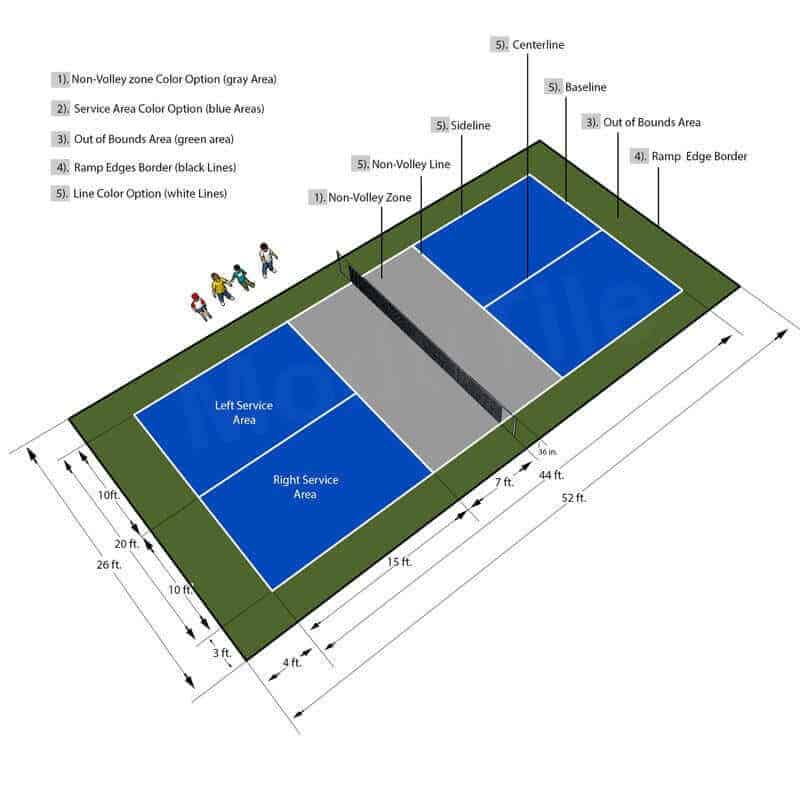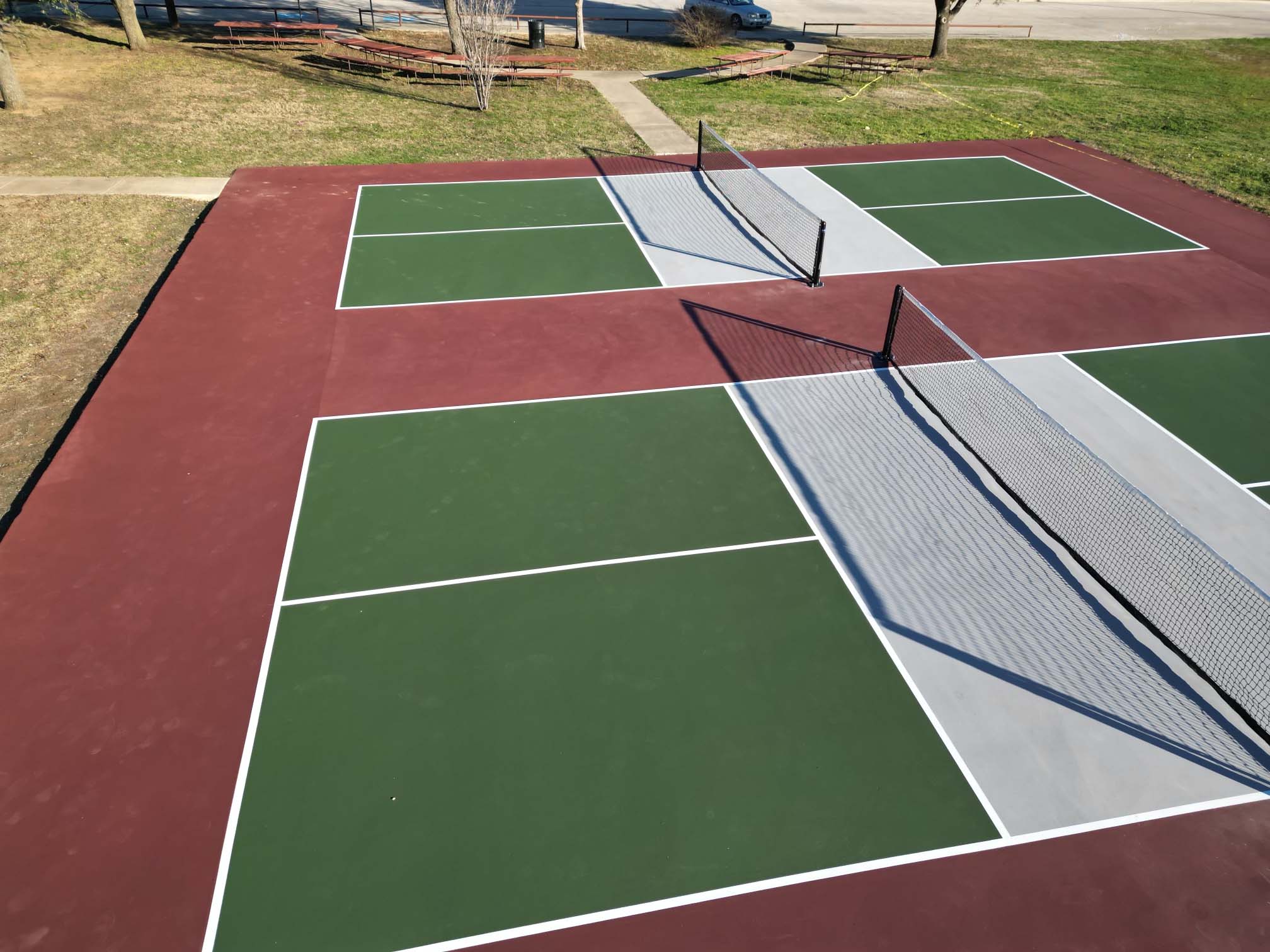Building a Pickleball Court Construction-- Expert Construction for High Quality Play
Building a Pickleball Court Construction-- Expert Construction for High Quality Play
Blog Article
Sustainable Practices in Pickleball Court Construction You Should Know
As the appeal of pickleball proceeds to climb, so too does the requirement for lasting techniques in court construction. The impact of these techniques prolongs far past the court itself.
Picking Eco-Friendly Materials
Picking environment-friendly materials is a crucial action in the building and construction of lasting pickleball courts. The selection of sustainable products not just lessens environmental influence however additionally enhances the long life and performance of the court. Secret materials consist of recycled rubber for the surface, which offers exceptional toughness and shock absorption while drawing away waste from landfills.
Additionally, utilizing locally sourced products minimizes transportation discharges and supports local economic climates. Pickleball court construction. As an example, utilizing native hardwoods for fence and seating can give a lasting visual while making certain strength versus the components.
Integrating permeable products for court structures can better add to sustainability by enabling all-natural water drainage and reducing drainage. These options not just protect local environments yet likewise promote much healthier play environments.
Reliable Drain Solutions
While the choice of environmentally friendly materials is important, implementing effective drain options is equally critical for keeping sustainable pickleball courts. Appropriate water drainage not only shields the court surface from water damage yet also reduces erosion and overflow, advertising environmental integrity.
Reliable water drainage systems can include absorptive paving, which enables water to penetrate the ground instead of pooling on the surface area. This decreases the probability of standing water, which can result in mold and various other maintenance concerns. Additionally, integrating tactically placed drain channels and swales can direct excess water away from the court area, ensuring a dry playing surface and avoiding soil erosion.
Making use of native greenery in the landscape design around the courts can even more enhance drain by soaking up excess water and minimizing overflow. These plants call for much less watering and promote biodiversity, lining up with lasting methods.
Moreover, it is essential to on a regular basis maintain the drainage system to ensure its long-lasting performance. This includes clearing particles and monitoring for obstructions. By prioritizing efficient drain remedies, pickleball court contractors can considerably add to the sustainability and durability of the center, ultimately benefiting both gamers and the setting.
Energy-Efficient Lights Options
As the need for pickleball continues to expand, incorporating energy-efficient lighting options into court design has come to be increasingly crucial for sustainability. Conventional lights systems frequently eat excessive energy, adding to greater operational expenses and environmental influence. For that reason, adopting contemporary, energy-efficient innovations is essential for both new constructions and remodellings.
LED (Light Emitting Diode) illumination stands apart as a leading selection because of its long life and energy cost savings (Pickleball court construction). Compared to standard illumination, LEDs utilize about 75% much less power and can last approximately advice 25 times much longer, considerably decreasing upkeep prices. In addition, the directional nature of LED lighting reduces light pollution, guaranteeing that illumination is concentrated on the court instead than bordering areas.

Sustainable Surface Alternatives
Exploring sustainable surface options for pickleball courts has actually gained traction among players and builders alike. The focus on environmentally friendly products not only straightens with the growing ecological recognition but additionally enhances the efficiency and durability of the courts.
This material gives exceptional shock absorption, minimizing the danger of injuries for players while advertising sustainability. These floor tiles are simple to change and mount, and their convenience permits for numerous court arrangements.
Natural yard courts are also becoming a lasting option, promoting biodiversity and weblink minimizing the warm island effect. However, they call for routine upkeep and water, which may not align with all sustainability goals.

Water Preservation Methods

Another efficient method entails the installation of rainwater harvesting systems. These systems keep and accumulate rainwater for usage in preserving court surface areas and landscaping. This technique not just conserves drinkable water yet also lowers reliance on community sources.
In addition, using drought-resistant landscaping around the courts is important. Native plants call for much less water and are better adjusted to regional environment conditions, hence reducing general water usage. Furthermore, making use of efficient irrigation systems, such as drip watering, ensures that water is delivered straight to plant roots, reducing evaporation and waste.
Conclusion
Including sustainable practices in pickleball court building and site construction significantly contributes to ecological preservation and resource effectiveness. By focusing on these methods, the building and construction of pickleball courts can straighten with more comprehensive environmental goals while promoting longevity and functionality within communities.
As the appeal of pickleball proceeds to rise, so too does the need for sustainable techniques in court construction.Choosing environment-friendly products is a crucial action in the construction of lasting pickleball courts. By focusing on energy-efficient lights alternatives, pickleball court manufacturers can contribute to a more sustainable future while meeting the demands of stakeholders and players alike.Incorporating lasting surface options not only improves the efficiency of pickleball courts but additionally paves the means for executing efficient water conservation strategies.Including sustainable practices in pickleball court construction substantially contributes to ecological preservation and source effectiveness.
Report this page